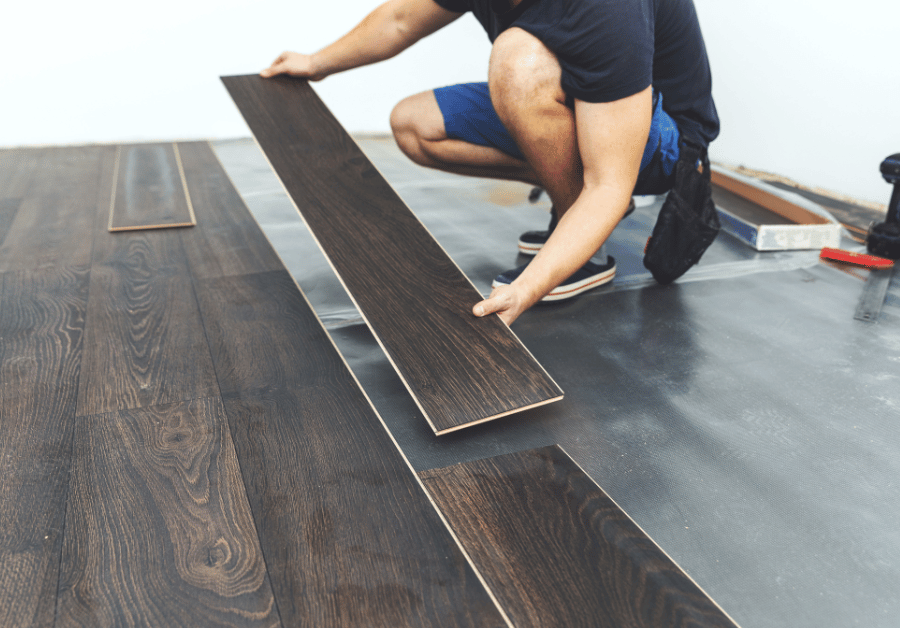Vinyl Laminate Plank Flooring: Your Comprehensive Australian Home Guide
Are you dreaming of a beautiful, durable, and practical floor for your Australian home? Perhaps you've heard the term "vinyl laminate plank flooring" and are curious if it's the perfect solution. While the term itself can be a bit confusing – as vinyl and laminate are distinct flooring types – both offer incredible benefits, especially in their plank forms, making them highly popular choices across Sydney, Melbourne, Perth, Brisbane, Adelaide, and Hobart. This comprehensive guide will demystify these options, highlight their unique advantages, and help you determine the best fit for your lifestyle and budget.
Choosing the right flooring is a significant decision. It impacts not only the aesthetics of your home but also its comfort, maintenance, and long-term value. With so many options available, from traditional timber flooring to modern hybrid flooring, understanding the nuances of vinyl plank flooring and laminate flooring is key. Let's dive in and explore why these plank floors have become a go-to for countless Australian homeowners.
Demystifying "Vinyl Laminate Plank Flooring": Understanding the Distinction
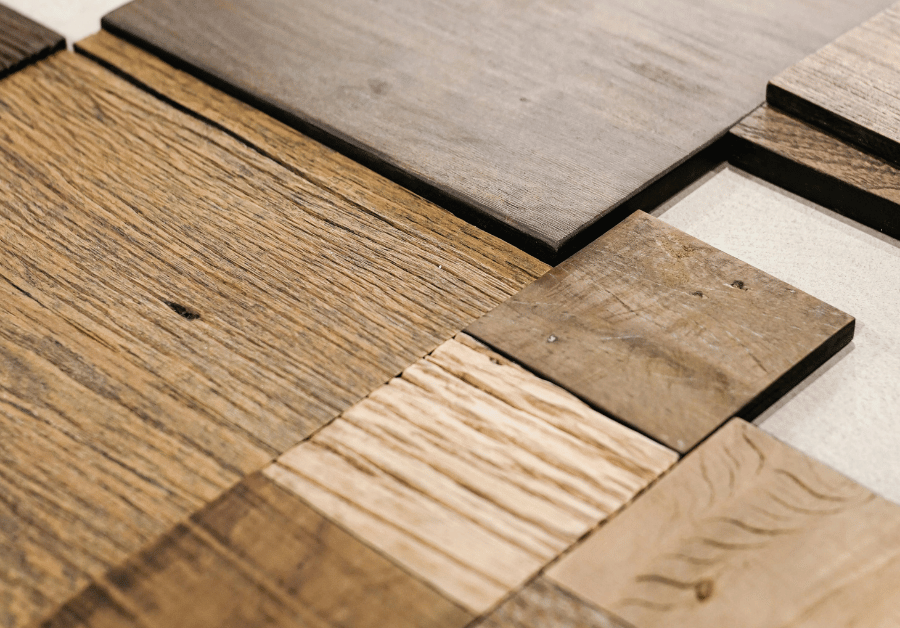
It's a common misconception that "vinyl laminate plank flooring" refers to a single product. In reality, vinyl and laminate are two separate, distinct flooring materials, each with its own unique composition and characteristics. Both are designed to mimic the luxurious look of natural timber or tile, but they achieve this through different means and offer varying performance benefits.
What is Vinyl Plank Flooring?
Vinyl plank flooring, often referred to as LVP (Luxury Vinyl Plank) or LVT (Luxury Vinyl Tile), is a multi-layered synthetic flooring product made primarily from PVC (polyvinyl chloride). It's engineered for durability and realism. A typical vinyl plank features:
- Wear Layer: A transparent top layer that protects against scratches, scuffs, and stains. The thickness of this layer (often measured in mil or mm) is crucial for durability and determines the flooring's class rating for residential or commercial use.
- Print Layer: A high-definition photographic film that replicates the look of natural materials like wood (e.g., oak vinyl plank, spotted gum, natural creations) or stone.
- Core Layer: The main body of the plank, providing stability and strength. This can be flexible PVC or, in newer luxury vinyl options, a rigid composite.
- Backing Layer: A foundational layer that provides structural integrity and sometimes incorporates an attached underlay for added comfort and sound absorption.
The key advantage of vinyl flooring, especially modern luxury vinyl plank floors, is its exceptional waterproof surface. This makes it an ideal flooring option for wet areas like kitchens, bathrooms, and laundries, a significant benefit for Australian homes where spills are common.
What is Laminate Flooring?
Laminate flooring is also a multi-layered synthetic product, but its core is typically made from high-density fibreboard (HDF), a wood-based material. Like vinyl, it features a photographic layer for design and a protective wear layer. The layers of laminate flooring are:
- Wear Layer: A clear, durable top coating that protects the print layer from scratches and impacts.
- Design Layer: A printed paper layer that provides the aesthetic, replicating timber flooring, tile, or stone.
- Core Layer: The HDF core provides stability and impact resistance. This wood-based core is the primary difference from vinyl.
- Backer Layer: A bottom layer that provides structural stability and helps prevent warping.
Laminate flooring is renowned for its ability to replicate the look of genuine hardwood at a more affordable price point. While it offers good resistance to everyday wear, its wood-based core makes it susceptible to water damage if exposed to standing moisture for extended periods.
The Unstoppable Rise of Vinyl Plank Flooring in Australian Homes
In recent years, vinyl plank flooring has become an undeniable favourite for home renovations and new builds across Australia. Its blend of practicality, aesthetic appeal, and durability makes it an incredibly versatile flooring solution for virtually any room.
Superior Durability and Resilience
Modern vinyl plank flooring is engineered to withstand the rigours of busy Australian households. Its robust wear layer offers excellent resistance to scratches, scuffs, and dents – making it a fantastic choice for homes with pets, active children, or high-traffic areas. According to flooring experts, the quality of the wear layer (often measured in mil or mm) is directly correlated to the flooring's longevity and its ability to maintain its appearance over time. Brands like Godfrey Hirst and Ultimo Vinyl offer products with impressive durability for both residential and commercial applications.
The Waterproof Advantage
Perhaps the most significant selling point for vinyl plank flooring is its inherent resistance to water. Unlike traditional timber or even laminate flooring, many types of vinyl plank flooring are genuinely 100% waterproof. This makes them perfectly suited for moisture-prone areas like kitchens, laundries, and bathrooms, where spills and splashes are inevitable. This waterproof surface provides peace of mind, protecting your subfloor and ensuring your investment lasts for years, even in humid climates common in Queensland and New South Wales.
Aesthetics That Impress: Design Versatility
Gone are the days of drab, plastic-looking vinyl. Today's luxury vinyl plank options boast incredibly realistic designs, textures, and colours. Whether you're looking for the warm tones of oak vinyl plank flooring, the distinct character of spotted gum, or the contemporary elegance of 'natural creations' from ranges like Eucalyptus Steps Collection, there's a vinyl plank to match every interior design vision. The advanced printing technology and embossed textures mean these plank floors not only look like real timber but often feel like it too, adding a touch of luxury to any space.
Comfort and Sound Absorption
Vinyl planks offer a softer, more resilient feel underfoot compared to hard surfaces like ceramic tile or even some timber options. This added comfort is a welcome feature, especially in living areas and bedrooms. Furthermore, vinyl can help with sound absorption, reducing the echo often found in open-plan living spaces. When combined with a quality underlay, vinyl flooring can significantly improve the acoustics of your home.
Effortless Maintenance
One of the joys of vinyl plank flooring is its low maintenance. Spills wipe up easily, and routine cleaning typically involves just sweeping, vacuuming, or a damp mop. There's no need for special polishes or waxes, saving you time and effort – a major plus for busy Australian families.
Exploring Luxury Vinyl Plank (LVP) Flooring: A Step Above
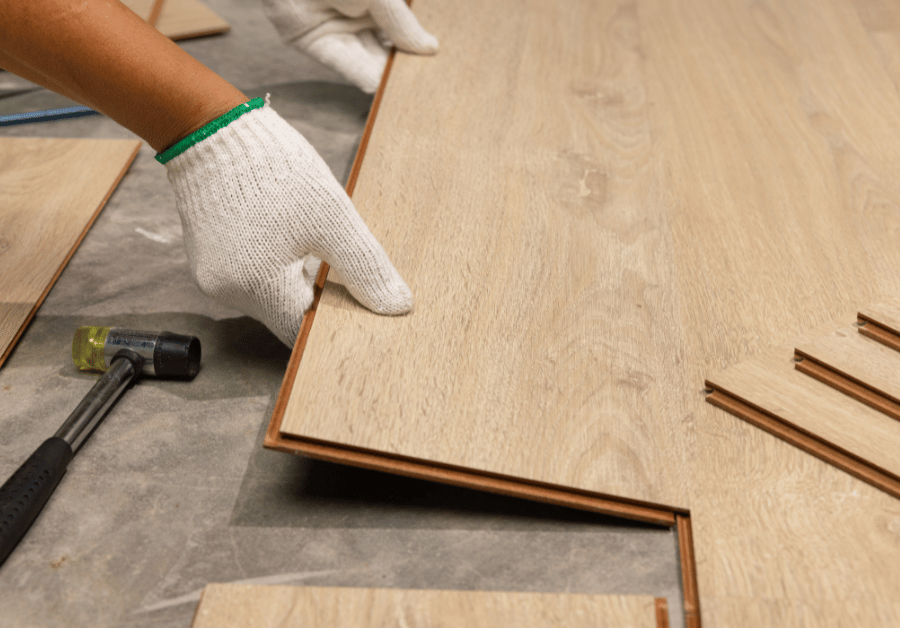
Within the broad category of vinyl plank flooring, 'luxury vinyl plank' (LVP) represents the premium end, offering enhanced performance and realism. LVP often comes in thicker planks, typically 4mm to 8mm or more (e.g., vinyl plank flooring mm), and incorporates advanced core technologies.
Key Types of Luxury Vinyl Plank:
- WPC (Wood Plastic Composite) Vinyl: WPC flooring features a core made from wood plastic composite, making it thicker, more comfortable underfoot, and excellent at hiding minor subfloor imperfections. It offers superior warmth and sound absorption.
- SPC (Stone Plastic Composite) Vinyl: SPC flooring has an ultra-dense, rigid core made from stone plastic composite. This makes it incredibly durable, dimensionally stable, and highly resistant to dents and impacts. SPC is thinner than WPC but offers unmatched toughness, making it ideal for high-traffic residential and commercial areas.
Both WPC and SPC luxury vinyl plank floors are 100% waterproof, offering superior performance compared to traditional sheet vinyl or older vinyl planks. They are designed for easy click-lock installation, making them a popular choice for homeowners looking for a DIY-friendly option, though professional installation ensures the best results.
Laminate Flooring: The Enduring Timber Look Alternative
While vinyl plank flooring has surged in popularity, laminate flooring continues to be a strong contender, particularly for those seeking the classic timber aesthetic at an attractive price point. It offers a compelling alternative, especially in dry areas of the home.
Advantages of Laminate Flooring:
- Cost-Effectiveness: Laminate is often more budget-friendly per square metre than luxury vinyl plank or genuine timber flooring, making it accessible for larger areas or tighter budgets.
- Authentic Timber Look: Modern laminate technology allows for incredibly realistic wood grain patterns and textures. You can find stunning oak vinyl plank and other timber designs that are hard to distinguish from real hardwood at a glance.
- Durability (for its class): Laminate's wear layer provides good resistance against scratches and everyday scuffs, making it suitable for active family areas.
- Easy Installation: Most laminate flooring uses a click-lock system, allowing for a floating floor installation that can be relatively quick for experienced DIYers or professionals.
Considerations for Laminate Flooring:
- Water Sensitivity: This is the primary limitation. The HDF core can swell and warp if exposed to excessive moisture or standing water, making it generally unsuitable for bathrooms, laundries, or areas prone to spills.
- Sound Transmission: Without proper underlay, laminate can sometimes produce a hollow sound when walked upon. A quality underlay is crucial to mitigate this.
- Resale Value: While it offers a great look, it may not command the same resale value as genuine timber or high-end luxury vinyl in some markets.
Vinyl Plank vs. Laminate Flooring: The Ultimate Showdown
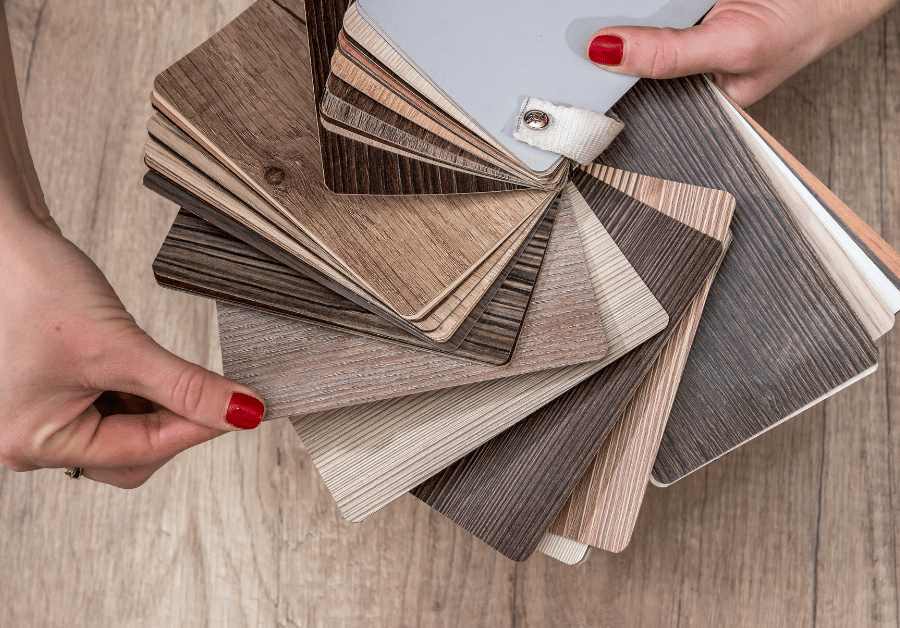
To help you make an informed decision, here's a detailed comparison of vinyl plank flooring and laminate flooring, highlighting their key differences:
| Feature | Vinyl Plank Flooring (LVP/LVT) | Laminate Flooring |
|---|---|---|
| Composition | Multiple layers of PVC, photographic layer, wear layer. Often with WPC or SPC rigid core. | HDF (High-Density Fibreboard) core, photographic layer, wear layer. |
| Water Resistance | Generally 100% waterproof (especially SPC/WPC). Ideal for wet areas like kitchens, bathrooms, laundries. | Susceptible to water damage; core can swell and warp. Not suitable for wet areas. |
| Durability | Excellent scratch, dent, and scuff resistance. Flexible and resilient. | Good scratch resistance, but prone to chipping/denting from heavy impact. Can be less forgiving than vinyl. |
| Comfort Underfoot | Softer, more resilient, and warmer underfoot. Good insulation properties. | Harder underfoot. Can feel colder. |
| Sound | Quieter due to composition. Absorbs sound well, especially with an integrated or quality underlay. | Can sound hollow or clicky; requires a good underlay for noise reduction. |
| Installation | Click-lock floating, glue-down, or loose lay. Relatively easy for DIY or professional installation. | Primarily click-lock floating floor. Relatively easy for DIY or professional installation. |
| Cost (per square metre) | Mid to High range. Varies significantly based on thickness and core type (e.g., SPC often higher). | Low to Mid range. Generally more budget-friendly than LVP. |
| Lifespan | 10-25+ years, depending on wear layer thickness and quality. | 10-25 years, depending on quality, care, and exposure to moisture. |
| Maintenance | Very easy to clean; low maintenance. Can be wet-mopped. | Easy to clean; avoid excessive water. Damp mopping is generally okay, but standing water is a risk. |
| Best Use Areas | Kitchens, bathrooms, laundries, living areas, bedrooms, commercial spaces. | Living areas, bedrooms, hallways, dining rooms (dry areas). |
Installation and Underlay: Getting it Right for Your Australian Home
Proper installation is paramount to the longevity and performance of both vinyl plank flooring and laminate flooring. While many modern plank floors are designed for straightforward DIY installation with click-lock systems, professional installation often ensures a flawless finish and adherence to warranty requirements.
Subfloor Preparation: The Foundation of Success
Regardless of whether you choose vinyl plank or laminate, the subfloor must be clean, dry, level, and structurally sound. Any imperfections in the subfloor will eventually telegraph through your new flooring, leading to an uneven surface or even damage over time. Our experience shows that skipping this crucial step is a common pitfall in home flooring projects.
Installation Methods:
- Click-Lock (Floating Floor): This is the most popular method for both vinyl planks and laminate. The planks simply click together, forming a seamless surface that 'floats' over the subfloor, with no adhesive required. This makes installation quicker and easier, and the flooring can be removed if needed.
- Glue-Down (for Vinyl Plank): Some vinyl plank flooring, particularly thinner commercial-grade options, are fully adhered to the subfloor using a strong adhesive. This provides maximum stability and is often preferred in high-traffic commercial environments.
- Loose Lay (for Vinyl Plank): Heavier, thicker vinyl planks can sometimes be installed without adhesive, relying on their weight and friction to stay in place. This is often used in commercial settings or for temporary installations.
The Importance of Underlay
Underlay is a critical component for both vinyl plank and laminate flooring, though the type of underlay differs. It provides several benefits:
- Sound Reduction: Significantly reduces impact noise and creates a quieter environment, especially important for laminate flooring which can otherwise sound hollow.
- Comfort: Adds a layer of cushioning, making the floor softer and more comfortable underfoot.
- Moisture Barrier: Protects the flooring from moisture rising from the subfloor, particularly vital for laminate.
- Subfloor Imperfection Masking: Helps smooth out minor irregularities in the subfloor.
For vinyl plank flooring, a thinner, denser underlay (often 1mm to 1.5mm) is typically recommended, or some luxury vinyl plank products come with an integrated underlay. For laminate flooring, a thicker, more sound-absorbent underlay (often 2mm to 3mm) is usually preferred to reduce sound transmission and provide a moisture barrier.
Choosing the Right Flooring for Your Australian Lifestyle & Location
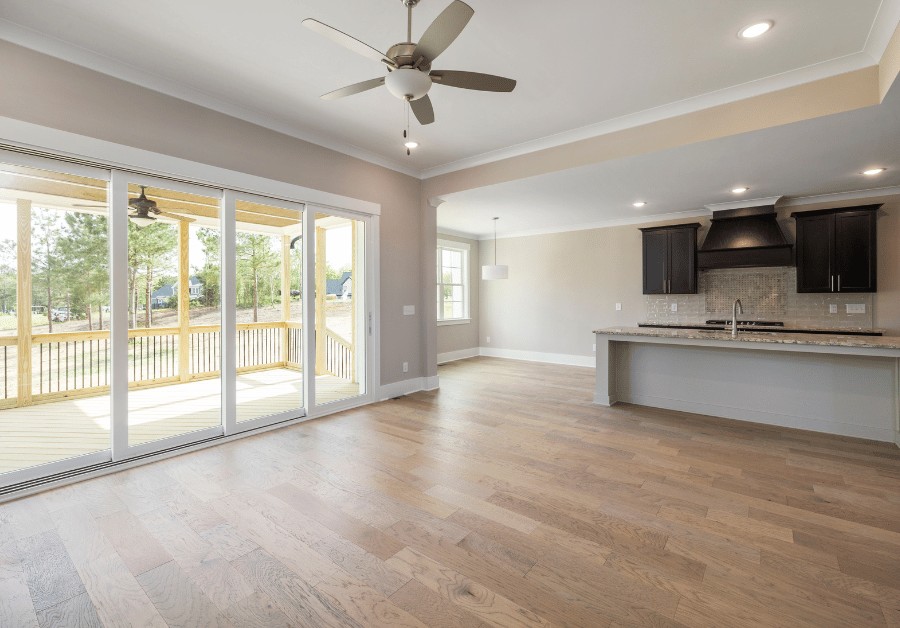
When selecting between vinyl plank flooring and laminate flooring, consider your specific needs, the climate, and your lifestyle in Australia. What works perfectly in a dry Adelaide home might be less suitable for a humid Brisbane residence.
- Climate Considerations: For homes in high-humidity areas like Queensland (QLD) and New South Wales (NSW), the waterproof surface of vinyl plank flooring offers a significant advantage, mitigating risks associated with moisture. In drier climates like parts of South Australia (SA) or Western Australia (WA), laminate might be a perfectly suitable and cost-effective option for many areas.
- Traffic and Use: How much foot traffic will the area receive? For busy family rooms, hallways, or commercial spaces, the superior durability and class rating of luxury vinyl plank floors (especially SPC core vinyl) make it an excellent choice.
- Pet-Friendly Homes: If you have pets, the scratch resistance and waterproof nature of vinyl plank flooring are highly beneficial, making accidental spills and pet messes easy to clean without damaging the floor.
- Aesthetic Preferences: Both options offer a vast range of designs. If you're looking for the authentic look and feel of timber, explore the 'oak vinyl plank' or 'spotted gum' designs available in both vinyl and laminate. Brands like Imagine Floors by Airstep offer a wide selection of stylish options.
- Budget: Determine your budget per square metre. Laminate flooring often presents a more economical upfront cost, while luxury vinyl plank flooring may represent a greater long-term investment due to its enhanced durability and waterproof properties.
- Local Availability: Reputable flooring suppliers in major cities like Melbourne, Sydney, Perth, Brisbane, Adelaide, and Hobart will have extensive ranges of both vinyl plank and laminate flooring products available, including various thicknesses (e.g., flooring mm vinyl sq m) and designs. Always check what's available in QLD, NSW, VIC, SA, WA, and TAS from local suppliers.
Maintenance & Longevity of Your Plank Floors
Both vinyl plank flooring and laminate flooring are relatively low maintenance, but understanding their specific care requirements will ensure their longevity and keep them looking fantastic for years.
- Regular Cleaning: For both types, regular sweeping or vacuuming to remove dirt and grit is essential. This prevents abrasive particles from scratching the wear layer.
- Moisture Control: For vinyl plank, a damp mop is perfectly fine. For laminate, use a lightly damp mop or a specialized laminate cleaner, and avoid excessive water, as standing water can cause damage.
- Protective Measures: Use felt pads under furniture legs to prevent scratches. For heavy furniture, consider furniture glides. Place doormats at entry points to trap dirt and moisture before it enters your home.
- Understanding Warranty: Always review the product warranty. Manufacturers like Godfrey Hirst and Ultimo Vinyl offer warranties that cover wear, stains, and sometimes water resistance. Understanding the class rating (residential vs. commercial) will also give you an idea of the expected durability.
Pros and Cons: A Quick Summary
To recap the key advantages and disadvantages of each:
Vinyl Plank Flooring (LVP/LVT)
- Pros: 100% waterproof (most types), extremely durable, excellent scratch and dent resistance, comfortable and quiet underfoot, wide range of realistic designs (spotted gum, oak vinyl plank), easy to maintain.
- Cons: Can be more expensive than laminate, some cheaper options may not be as realistic, can be difficult to repair individual planks if glued down.
Laminate Flooring
- Pros: Cost-effective, highly realistic timber look, good scratch resistance, relatively easy DIY installation.
- Cons: Not waterproof (susceptible to water damage), can be loud or hollow-sounding without proper underlay, less comfortable underfoot than vinyl, can be prone to chipping.
- Question 1: What is the difference between vinyl plank flooring and laminate flooring?Question 2: Is vinyl plank flooring suitable for Australian climates?Question 3: Can I install vinyl or laminate flooring myself, or should I hire a professional?Question 4: What type of plank flooring is best for homes with pets or kids?
Ready to Transform Your Home with the Perfect Plank Flooring?
Whether you lean towards the robust, waterproof benefits of vinyl plank flooring or the classic, cost-effective appeal of laminate flooring, both options offer incredible versatility and style for your Australian home. From the bustling city apartments of Sydney and Melbourne to the serene coastal homes of Perth and the vibrant communities of Brisbane, Adelaide, and Hobart, plank floors are transforming living spaces across the nation.
Choosing the right flooring is a significant investment in your home's future. It’s about finding the perfect balance between aesthetics, durability, and budget. Don't navigate the vast array of options alone! At Get 3 Quote, we make it incredibly easy to connect with trusted, verified local flooring professionals who can provide expert advice, show you samples of the latest designs (like spotted gum or oak vinyl plank), and offer competitive quotes for your project.
Here's how Get 3 Quote simplifies your flooring journey:
- Tell us what you need: Fill out our simple online form and describe your flooring project. Whether it's a small room or an entire home, we'll understand your requirements.
- Get quotes from professionals: Receive up to 3 detailed, no-obligation quotes from verified local flooring experts in your area. Our network includes top-rated providers experienced in all types of plank flooring installation.
- Choose the best match: Compare quotes, review profiles, and read testimonials to find the perfect professional for your job. It’s that easy!
Stop searching endlessly for reliable flooring installers. Take the first step towards your dream floors today!
